What Is NetSuite's WMS Module?
NetSuite's WMS (Warehouse Management System) Module is a native extension of the core NetSuite solution that provides real-time visibility into...
1 min read
 J. Lynne Wilson Jenkins
:
Nov 28, 2019 8:18:59 AM
J. Lynne Wilson Jenkins
:
Nov 28, 2019 8:18:59 AM
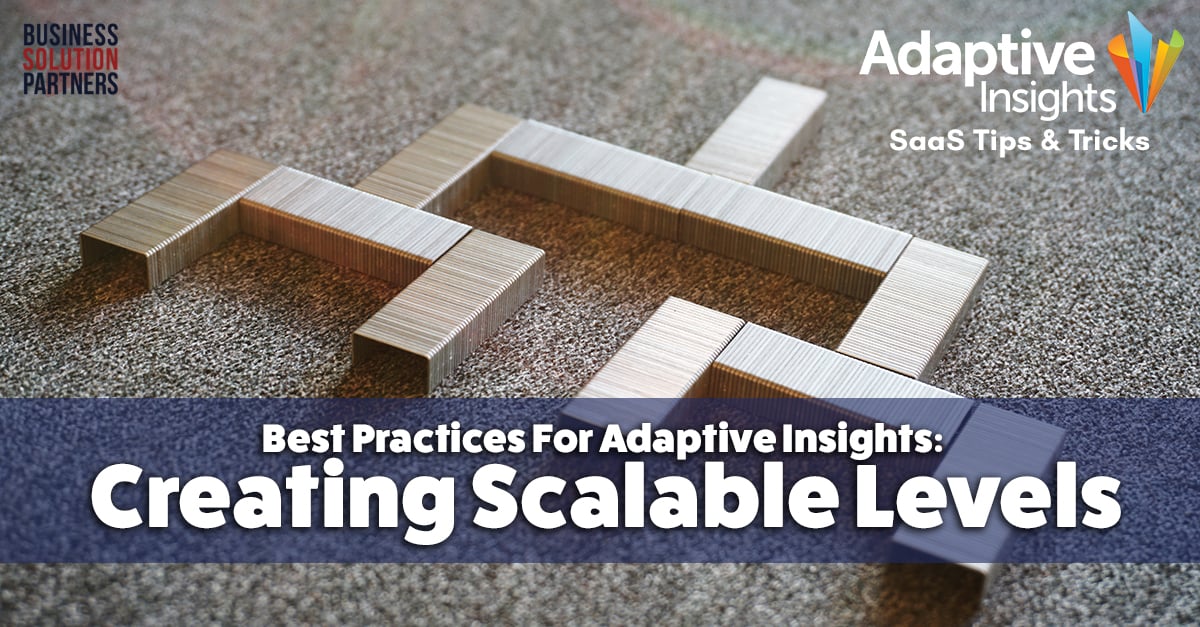
Levels are the organizational structures of your business. For example, levels represent subsidiaries/entities, departments/cost centers/profit centers, regions, etc.
A level can be a leaf level – meaning it does not have any child levels below it. Levels can also be hierarchical – meaning that a Level can be a parent and/or a child. The hierarchy determines how the data will rollup or aggregate.
This aggregation is important for Reporting purposes, so, reporting requirements need to be considered early on when developing the Level Hierarchy.
The instance comes with a default Top Level. This Top Level cannot have a parent level above it, so it is Best Practice is to leave Top Level unchanged and add a Level under “Top Level” to serve as a starting point for the Level hierarchy.
This formatting allows for organizational changes and growth in the future – acquisitions, restructuring, etc. In the example below, Total Company is the Top Level and Consulting Inc is the starting point of the Level hierarchy.
If Total Company created another entity that would become the new parent of Consulting Inc and Consulting Services, it could easily be added as a child of Total Company. Consulting Inc and Consulting Services could then be “reparented” to the new entity.
BEFORE ADDING “NEW PARENT” LEVEL
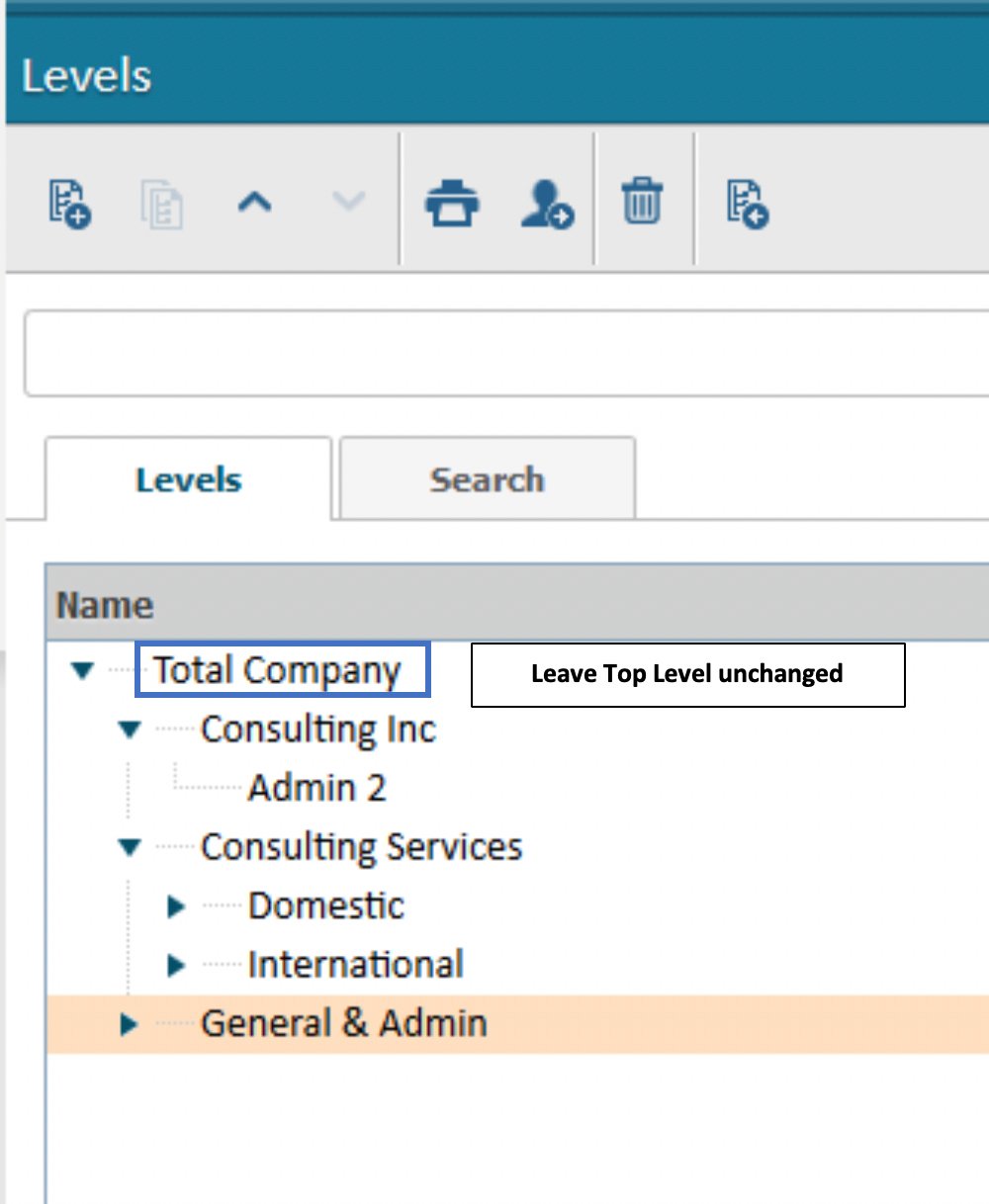
AFTER ADDING “NEW PARENT” LEVEL
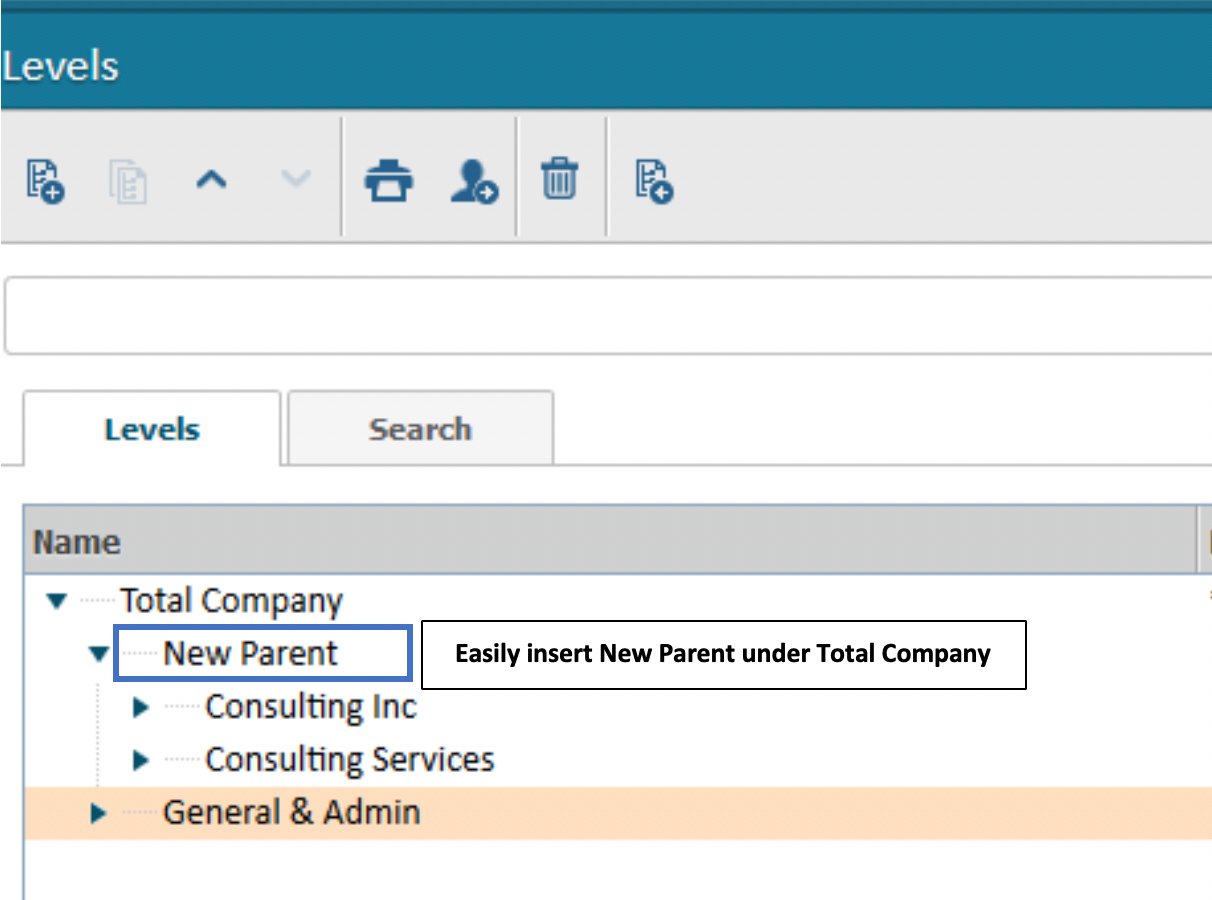
In Adaptive, data cannot be entered at the parent or rollup level. Therefore, the system automatically generates an (Only) child level for every parent level. Data that belongs at the parent level can be entered on the Parent (Only) level.
The (Only) levels do NOT appear in the Levels model management page but do appear in the Sheets and Reports Level drop-down selectors.
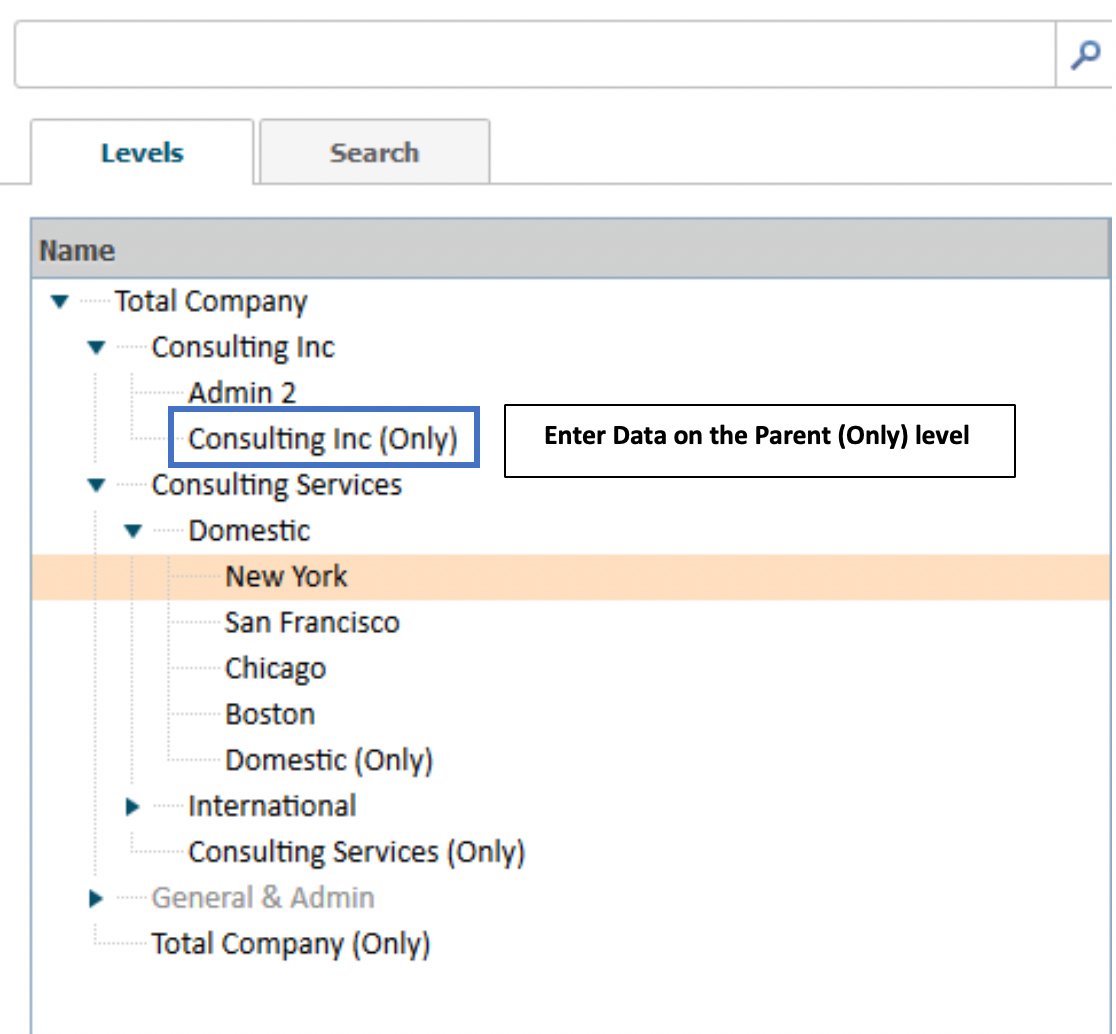
Uniformity and Consistency are very important in creating the Level names. All Level names must be unique. So if there are multiple entities using the same department name (ie., Marketing, Sales, etc), there needs to be some way to differentiate Marketing in one entity from another entity in the Level structure.
The Best Practice is to use the Naming Convention of :
Entity Name - Department (i.e., Entity 1 – Marketing, Entity 2 – Marketing)
Maintaining the consistency in the naming convention also makes it easier for users to search for a specific level in the drop-down selector.
Another factor that needs to be considered when building the Level structure is Security. Users are granted access to data based on the level(s) to which they are assigned.
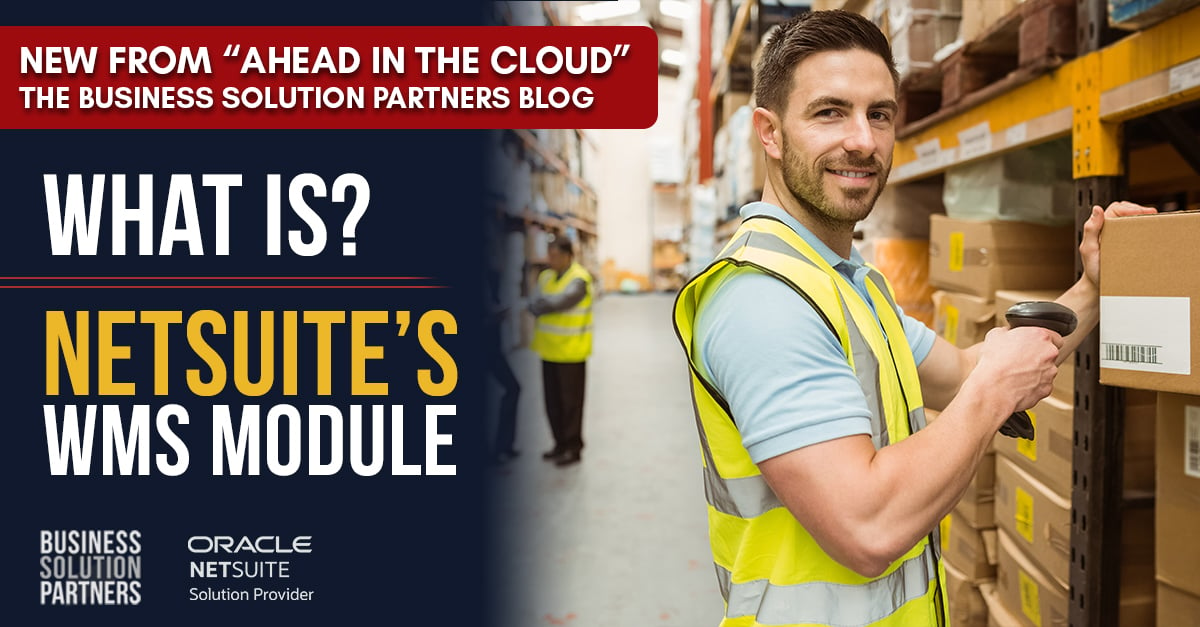
NetSuite's WMS (Warehouse Management System) Module is a native extension of the core NetSuite solution that provides real-time visibility into...
With the volume of orders placed through the e-commerce channel growing rapidly for wholesale distributors, so is the number of returns. According to...
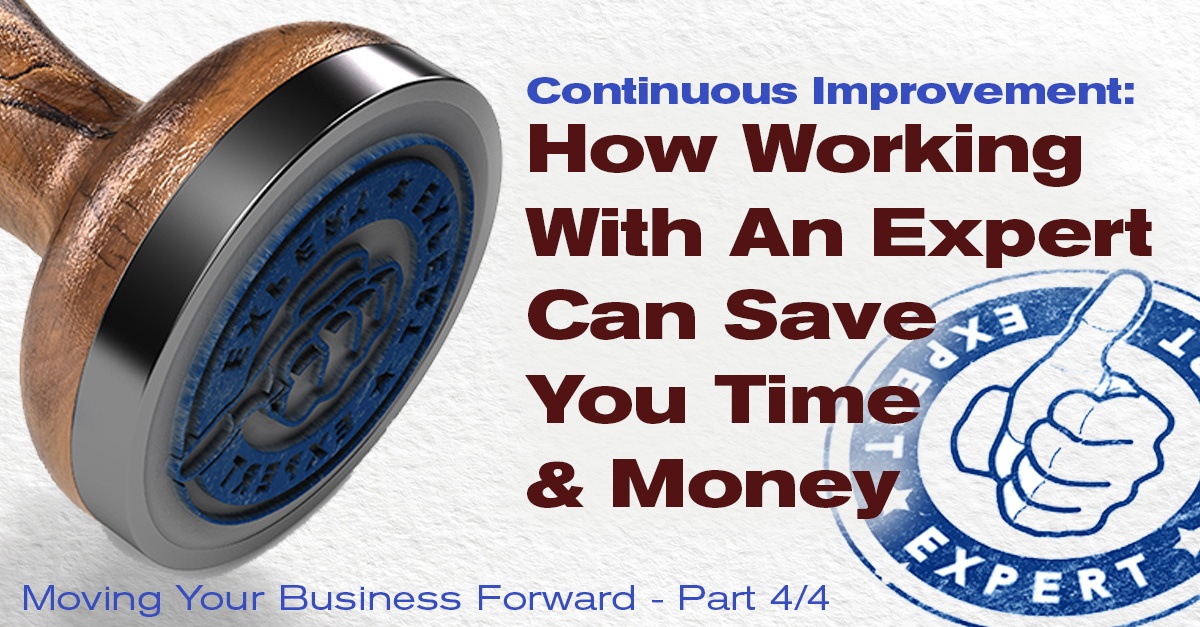
Welcome to Part 4/4 in our series on Continuous Improvement. Previously, we introduced you to the business concept, traced it’s roots back to Japan,...